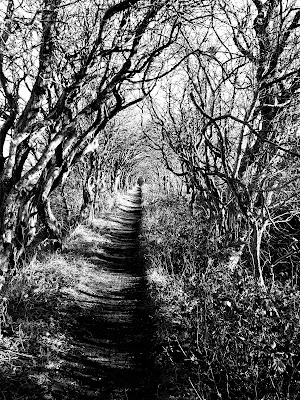The Moss
One of the outstanding observations that I made this morning was of a Red Admiral butterfly that danced passed me in the warmth of the late morning sunshine! I was hoping to get a photograph of this red, black and white sprite, wakened from it's slumber by the warming sun, but it fluttered past without dallying!
Red Admiral (but not from today)
An increase in bird song was noticeable this morning and out of four Song Thrushes, two were singing males. Skylarks were also singing this morning and it lifted my heart to gaze up towards the heavens to hear this beautiful songster, without being able to see him. Percy Shelley described the Skylark perfectly in his poem 'To a Skylark', of which you can find a selection below; I couldn't have put it better myself (I wish)!
Hail to thee, blithe Spirit!
Bird thou never wert,
That from Heaven, or near it,
Pourest thy full heart
In profuse strains of unpremeditated art.
Higher still and higher
From the earth thou springest
Like a cloud of fire;
The blue deep thou wingest,
And singing still dost soar, and soaring ever singest.
In the golden lightning
Of the sunken sun,
O'er which clouds are bright'ning,
Thou dost float and run;
Like an unbodied joy whose race is just begun.
The pale purple even
Melts around thy flight;
Like a star of Heaven,
In the broad day-light
Thou art unseen, but yet I hear thy shrill delight, In addition to the singing 'blithe spirit' a number of Skylarks were moving around and foraging in the stubbles and in total I counted 55. Three species of raptor graced me with their presence in the form of a female Kestrel, Buzzard and a most handsome adult male Sparrowhawk, looking dapper in his slate blue-grey and orange plumage; gorgeous!
A few Pink-footed Geese were on the move, 140 in total, and a pair of Stonechats remain, but the pond pair seem to have moved on. There were good numbers of Linnets feeding in various pockets of suitable habitat and I had 221 in total along with 17 of their clown-faced cousins, the Goldfinch.
Linnet
Of all the sites that I am covering at the moment this is the only one where I am seeing Grey Partridges, and as ever it was a delight to see six of these classic farmland birds 'whirr' away from me across a ploughed field. A Mistle Thrush and two Snipes later my survey was over and it was time to return to my car and head home for a coffee and a read in the sun lounge!
I've just pulled a note book off my book shelf from 1984 and looked at two dates; 26th January 1984, 34 years ago to the day of the above survey, and 29th January 1984, 34 years ago today.
On 26th January 1984 I was birding during the afternoon at Marton Mere LNR, which is a cracking wetland reserve to the east of Blackpool in Lancashire. The weather was totally different to my survey above as it was dull and cold with lying snow! There are a few records that stand out, not because of the rarity of the species, but because of the count and these are five Short-eared Owls, 52 Snipe, eight Woodcocks and 50 Pochards.
Short-eared Owl
Now the cold weather with an easterly wind will have undoubtedly moved some of these birds on to the site in these numbers, but a number of these species have seriously declined and you just don't record them in the numbers of 30-40 years ago, with Pochard being an obvious sad example.
The Wetland and Wildfowl Trust (WWT) carried out assessments of the sex ratio of Pochard counts undertaken in countries across Europe and into North Africa in January 2016, for comparison with results from surveys carried out over the same area in January 1989 and January 1990. The WWT found that the proportion of males in the population had increased significantly between 1989/90 and 2016 from 0.6 to 0.7. What is interesting, is that the sex ratio of Pochards broods is approximately 1:1 at hatching, and the strong male bias among adult birds is indicative of lower survival of females compared with males. The authors of the report suggest that the factors adversely affecting female survival rate may partly explain the decline in overall Pochard abundance.
On this day in 1984 I was birding at a few of the sites that I still count as part of my patch, namely Rossall School and Rossall Point. And again it is a tale of declining and changing bird populations. My first port of call was Rossall School and again it was dull and cold. Just behind the sea wall was a lovely flock of 20, yes 20, Snow Buntings! You're lucky now to get two, if any at all some winters!
Moving on to Rossall Point I had a further eight Snow Bunts with 20 Twite; nice! So what's changed? There has been a general decline in the population of these two species due to changes in habitat on their breeding grounds, and climate change is having an effect, particularly on Snow Buntings. Another factor is undoubtedly disturbance at a local level. At both sites the area is now over run with dogs and dog walkers. There are some well behaved dog walkers who keep their dogs on a lead, but sadly the majority don't, and instead of having just one dog, 2 or 3 seems to be becoming the norm. I think I'll stop there, because I could go on about the disturbance to wildlife caused by a very high percentage of dog walkers, who give the wildlife loving conscientious dog walkers a bad name!
It's more wintering bird surveys for me this week if the weather behaves and I'll be sure to keep you posted!











